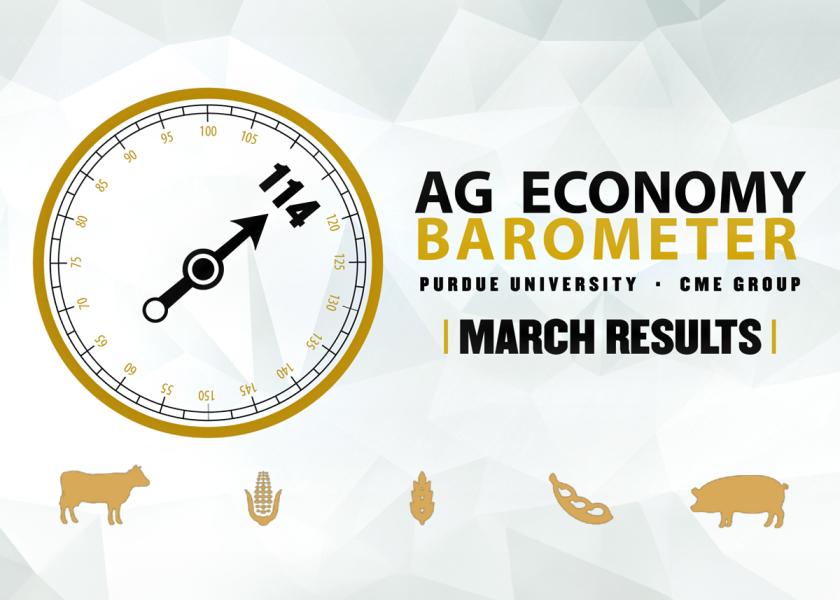Farmers Express Optimism In Purdue's Latest Ag Economy Barometer

Purdue’s March ag economy barometer is up to a reading of 114 – an increase of three points from February.
Dr. Jim Mintert, professor of agricultural economics and director, Center for Commercial Agriculture at Purdue University, says the results of the latest barometer can be traced back to an increase in farmer optimism.
“All of the increase was attributable to people becoming more optimistic about the future,” he shared on a recent episode of AgriTalk. “The future expectation index was up five points compared to last month, and that was seven points higher than a year ago. So, it really had to outweigh the fact that the current condition index was actually down a little bit compared to last month and down substantially compared to last year. That was interesting.”
Mintert believes the rise in sentiment comes back to interest rates.
“The thing we were able to point to the most was the fact that people became more optimistic about interest rates and interest rates going down over the upcoming year, and potentially the impact that would have on the ag sector in general in ag incomes,” he says. “Although people didn't explicitly tell us as it was interest rates, when you looked at some of the other questions, it appeared the change in interest rate outlook did impact their viewpoints.”
In the March barometer, which was conducted March 11-15, 48% of respondents shared they anticipate U.S. prime interest rates to decline over the next year – which is an increase from the 35% who had this outlook in December 2023.
“The shift is quite remarkable,” Mintert says. “Last summer, 60% of the people surveyed thought rates were going up. This month, only 32% of the people in the survey think rates are going up.”
At the same time, just 20% of respondents said the risk of rising interest rates was their top concern. The majority – 36% - were more concerned with high input costs.
“I think what people are telling us is they think the margin squeeze we're experiencing right now with high breakevens and weakening commodity prices, is a little bit of a temporary phenomenon,” Mintert says.
Two Surprises
One area of this month’s results Mintert says is surprising also relates back to the respondents’ outlook on interest rates.
“The short-term farmland index actually jumped up nine points, and that's a fairly big move for that index in a one-month span. That left it 11 points higher than this time last year,” he says. “The No. 1 reason we could come up with was the expectations for some softer or weaker interest rates.”
The second surprise came from the number of discussions around solar energy and carbon capture.
“12% said they'd had a conversation in the last six months [involving solar energy], which was kind of interesting,” he says. “We've been surprised at how many people tell us they've been talking to somebody about carbon capture – 18% said that they'd had at least a conversation.”







